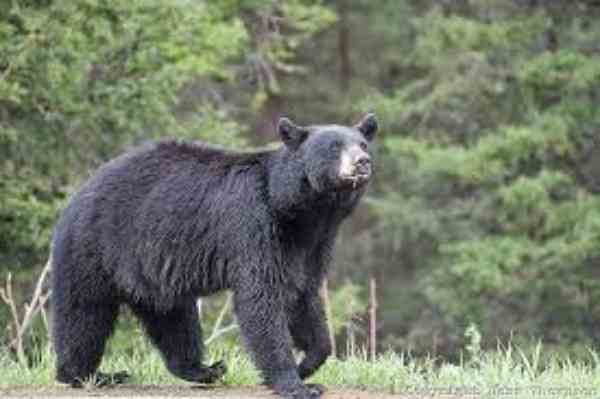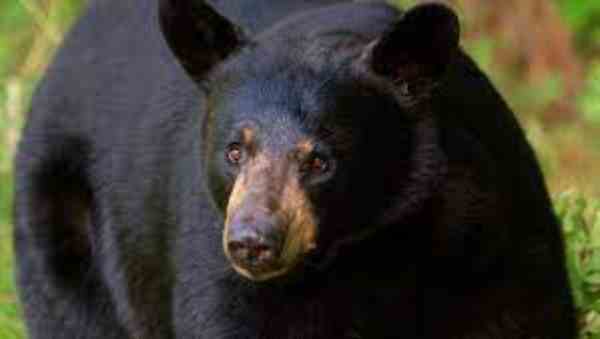Michigan is home to a diverse population of animals, including the American black bear. Michigan’s nearly 500,000 acres of state forests and wilderness areas provide ideal habitats for these furry creatures. Bears inhabit nearly every county in Michigan, foraging for food among both deciduous and coniferous trees. They can be seen scrounging through an abundance of nuts, fruits, roots, grasses and even small animals.

Table of Contents
Black Bears in Michigan
Black Bears in Michigan are an amazing sight to behold and their population has experienced steady growth over the past few years. As of 2020, Black Bears have been spotted in every county across the state of Michigan. The Black Bear is an apex predator found predominantly close to woodland areas, making Michigan’s woodlands and forests ideal for habitation. Black Bear sightings within Michigan can be reported here at certain specified sites, providing helpful feedback and data to wildlife organizations who use this information to best manage Black Bear populations in the area.
Where are bears located in Michigan?
Black Bears, can be found across the state, with denser populations up north. Black Bears in Michigan tend to migrate within the state for different seasonal food sources, and research has suggested that Black Bears may roam a territory of up to 25 miles during warmer months. While Black Bears are fairly common throughout their large range in Michigan, the majority of sightings occur further north in parts of the Upper Peninsula and Northern Lower Peninsula. Black Bears normally reside deep in forests most of the time and away from humans.
Habitat
Michigan’s Black Bears inhabit woodlands, swamps, forests, and meadows. During spring, summer and fall they prefer to remain in these heavily vegetated areas, They tend to move throughout the landscape looking for food sources; however, when winter arrives Black Bears seek shelter in dens in hollow logs or tree cavities. Here is where they den up and go into semi-hibernation by reducing their body temperature and respiration rates. Despite being thought of as solitary mammals during the denning period most Michigan Black Bears will congregate in family groups with male bears leaving before emerging in the spring.
Diet
They are opportunistic feeders and eat fruits, nuts, insects, honey and anything else that will provide them with sustenance. In the summer months, they prefer to consume plant foods such as berries or other sweet material whilst, during the winter, they tend to dine on carrion and small prey such as rodents or deer.

Colour
In Michigan’s northern regions, most black bears have dark black fur, but their colour may lighten as you move further south. In some areas of southern Michigan, the majority of black bears are brown or cinnamon-coloured due to genetic variations.
Size, Lifespan and Weight
The average black bear will weigh between 150 to 600 pounds, or even more in some cases. In terms of length, an adult black bear can have a total standing size of 3 to 7 feet. Furthermore, black bears are long-lived species with a lifespan of approximately 15 – 25 years when living in the wild, and up to 30 years when in captivity.
Predators
Bears in Michigan have the occasional run-in with some of their more vicious predators, such as coyotes, bobcats and mountain lions. Fortunately for the bears, they are generally much larger than their predators and can often repel the attack. Still, if the predator sees an opportunity like a bear cub being left alone for even just a few minutes it might rush in to feed or carry away the smaller animal.
This is something all bear families should keep in mind when venturing into Michigan’s forests and mountain ranges; while they may never see any of these predators on their travels, they must still be aware that they could be nearby lurking in shadows or behind tall grasses.

Reproduction
Black bears are equipped with sophisticated reproductive strategies that have allowed the species to thrive, even in the face of intense competition for resources. Their mating period starts in mid-May, although different populations have slight variations in timing. During this time, female bears will mate with multiple males and store sperm from each mating until wintertime when she enters into a state of delayed implantation.
This means that although her body can hold onto multiple sets of sperm at once, it won’t begin the process of producing cubs until later on in the year. A few months after entering hibernation, she’ll give birth to litters averaging two cubs (though litters can range between one and four). The mother bear will raise these cubs on her own over the winter before they venture out on their own come springtime.

Faqs
How many bears are in Michigan?
The most recent report by state wildlife biologists estimates that there are roughly 12,000 to 13,000 black bears in Michigan.
When do black bears hibernate in Michigan?
Black bears in Michigan begin hibernating in autumn as temperatures drop and food sources become limited. This process helps them survive the winter time, as they will snuggle up in dens they have created and rely on fat stores to make it until spring returns–emerging in the early spring months.
Are black bears now considered pests in the state of Michigan?
Due to the growing population of black bears in the state, they are now considered agricultural pests. As adults grow larger than 300 pounds – far too big for a backyard bird feeder – many have turned to raid farmers’ crops instead. Some local municipalities have even enacted laws that can legally “humanely” remove black bears that get too close for comfort.
Reference:
https://www.nps.gov/grsm/learn/nature/black-bears.htm
https://www.fllt.org/black-bear-hibernation-bearing-the-cold-of-winter/
A motivated philosophy graduate and student of wildlife conservation with a deep interest in human-wildlife relationships, including wildlife communication, environmental education, and conservation anthropology. Offers strong interpersonal, research, writing, and creativity skills.










